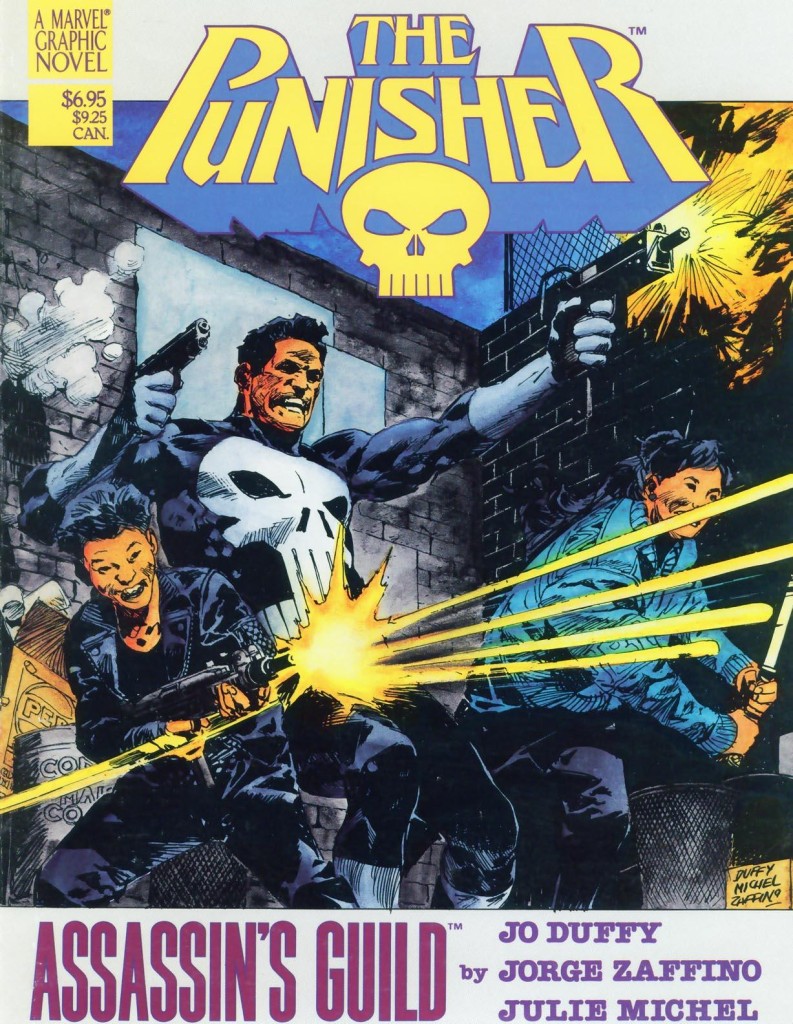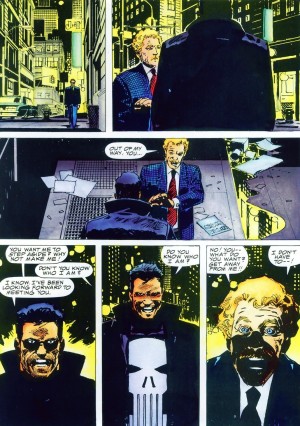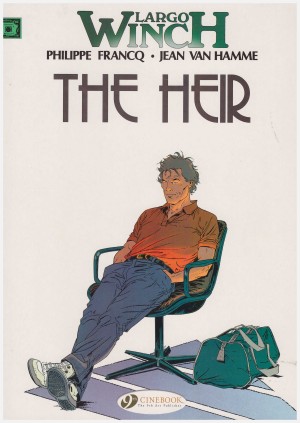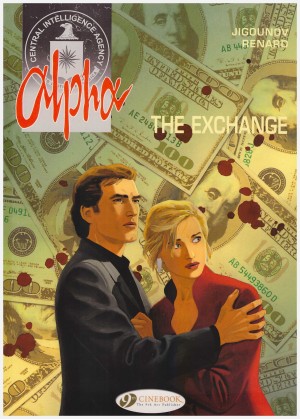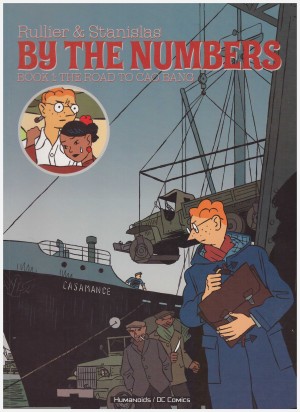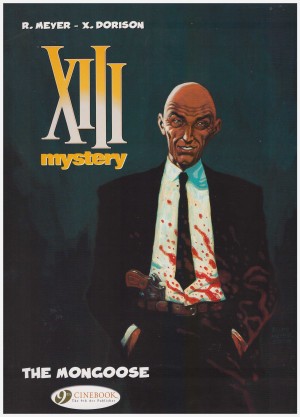Review by Ian Keogh
Marvel’s 1980s line of oversize graphic novels spotlighted the Punisher as a recurring feature, and this was the first of the series.
The Assassin’s Guild of the title is not as might be expected. It’s run from a Chinese restaurant, and involves a bunch of young people each bidding on a job, with the lowest bid allotted the task. The Punisher has heard whispers of them previously, but never made a concerted effort to track them down, yet their paths cross as he begins investigating a shady lawyer. There’s an ethical argument at the core of his objection to them despite their sharing his predilection for only murdering those who deserve it. In the Punisher’s eyes the Guild is tainted by accepting money for their services. It’s a fine distinction, and when it comes to light it’s rather a text-heavy stumbling block in what’s otherwise an interesting script.
Jo Duffy’s first person narrative was long established for the Punisher, and it’s helped in not dating his material as much as other 1980s comics. She works the device effectively, and, importantly, knows when not to plaster the art with superfluous captions. Jorge Zaffino is particularly suited to depicting the grubby and dissolute Manhattan of the 1980s with his scratchy naturalism, which is all the more surprising for his being an Argentinian resident at the time. Like other artists from his country working in American comics, his page breakdowns and storytelling abilities are exceptional. He’d reprise his impressive act on Kingdom Gone. For the times there’s also some very restrained and effective colouring from Julie Michel. Those who prioritise the art might rate this more highly overall on that basis alone.
The book splits into two sections, the opening deduction and then the storming of a supposedly impregnable hideout, at which point the writing shifts from narrative to dialogue, of which there is an excess. Duffy also doesn’t capture the Punisher’s character, concentrating more on moving the plot forward when he speaks. Here we’re in more commonplace Punisher territory, and while Zaffino’s art carries us through it’s predictable and runs out of steam.
